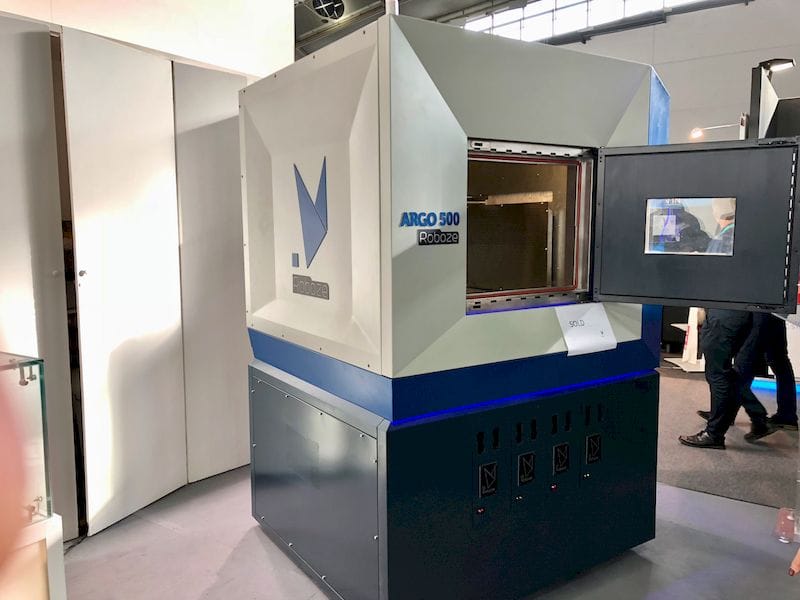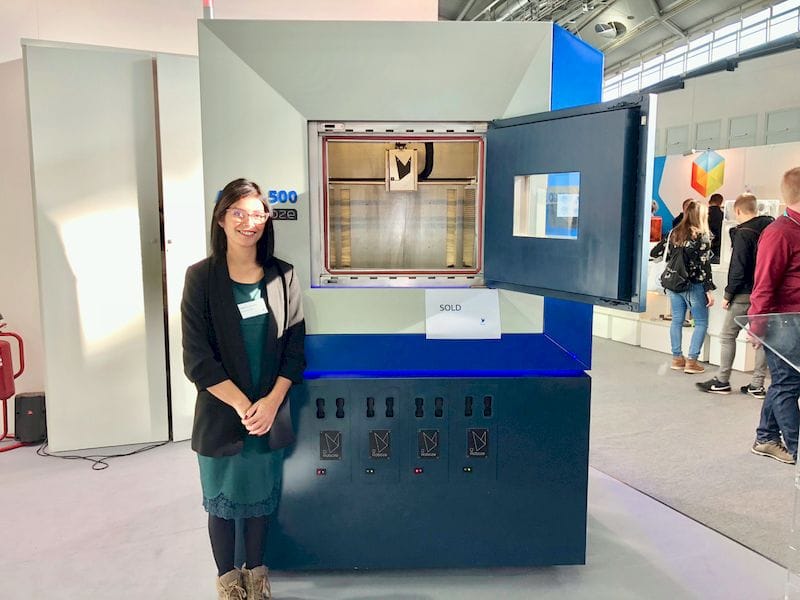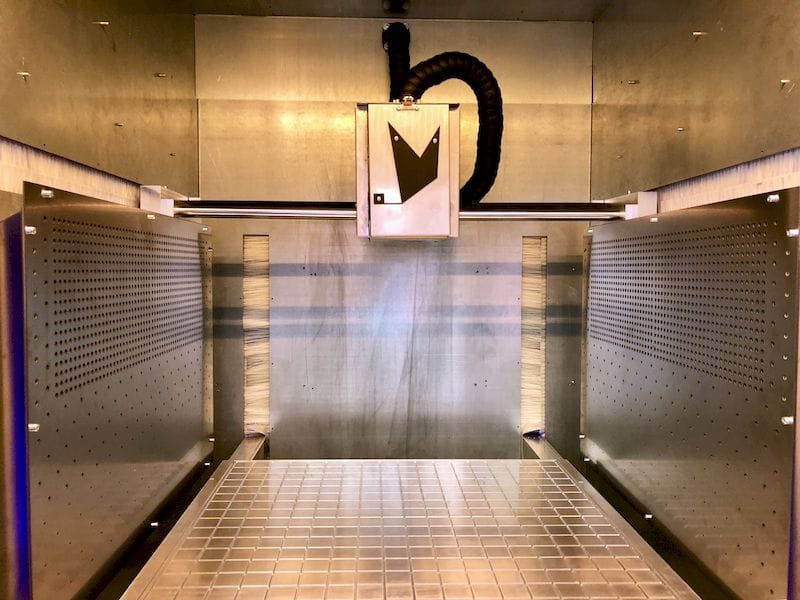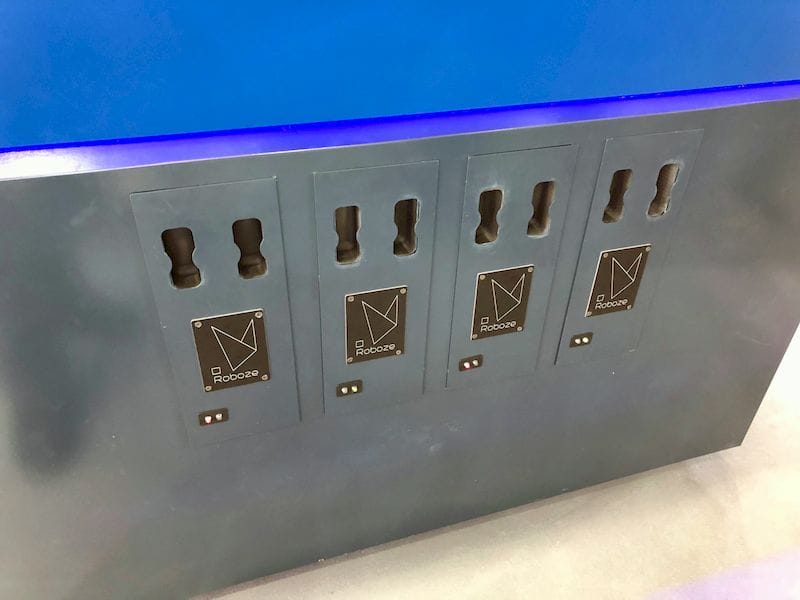
It seems that every desktop 3D printer company eventually makes a large machine.
Today we’re talking about Roboze’s new Argo 500, which certainly fits that scenario, as it is quite a bit larger than any of their previous equipment.
Bari, Italy-based Roboze has produced several 3D printers previously (and still does), but they were essentially prototyping machines specialized in higher-temperature materials, like PEEK and ULTEM. Now they’ve taken that technology to a new level: The new Argo 500 is touted as a production machine.

While the Argo 500 includes defacto standard industry features such as automatic calibration and a touch screen display, it has some other intriguing features.
The high temperature aspect continues in the Argo 500, with a nozzle that can reach a searing 550C, and a heated chamber ready to achieve 180C. This 500 x 500 x 500mm build chamber temperature is achieved in about one hour, as it is so much higher than typical machines.

They’ve instituted a new surface adhesion system that seems reminiscent of the approach used by Stratasys in their Fortus line: a vacuum plate holds down a film on which the print is laid. Roboze supplies different films for different materials, as the adhesion chemistry varies among the 17 different materials that you can 3D print with this large device.
The Argo 500 is designed for continuous operation, making it a true production machine. This is accomplished through the use of dual spool holders for both model and support material. The filament is auto-loading as well.

We’re told Roboze supplies their own materials for the Argo 500, but that it is possible to provide profiles for alternative materials as well. This could make the Argo 500 a bit less expensive to operate than similar machines.
While this particular Argo 500 is only a demonstrator device shown at FormNext, they intend on commencing sales sometime in the middle of 2018, with a cost in the €150,000 range (USD$175,000). Nevertheless, Roboze has accepted orders for the Argo even at this early date.
It’s also possible Roboze may choose to produce a line of Argo devices, with both smaller and larger build volumes in the future.
Competitively, this device seems squarely aimed at competing with the Stratasys Fortus line, which does not offer quite as many materials and certainly not at the same high temperatures. While the Fortus may have a larger sales network, it’s likely your operating costs could be less with the Argo.
Via Roboze

